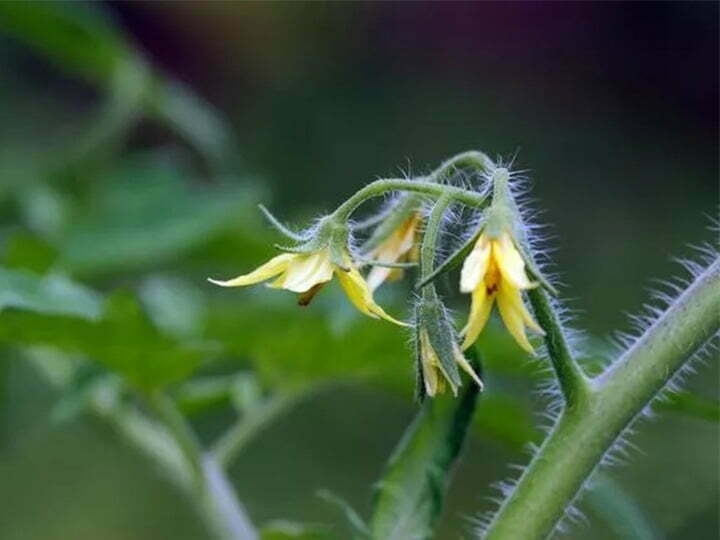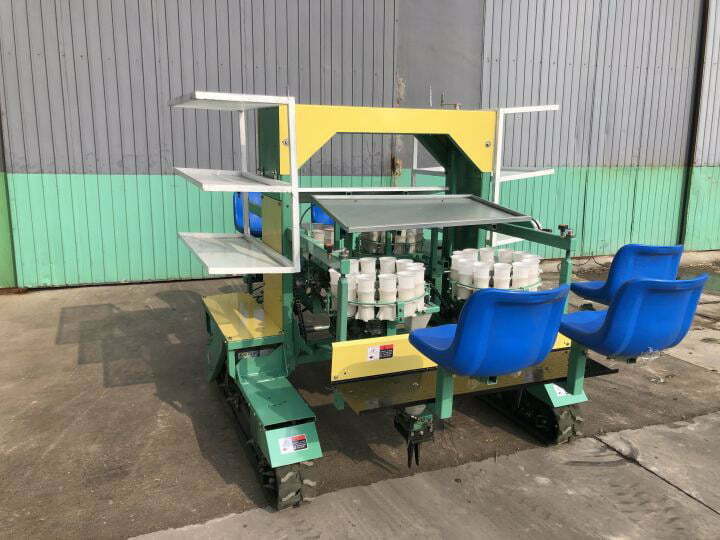Tomato ialah salah satu sayur yang biasa dalam kehidupan, dan ramai orang suka makan tomato. Rasanya sangat sedap, mencampurkan rasa masam dan manis. Selain digoreng, ia juga boleh digunakan terus sebagai buah. Sesetengah orang berpendapat bahawa hanya tomato yang ditanam menggunakan mesin pemindah profesional yang boleh tumbuh lebih baik. Sebenarnya, kita boleh menanam tomato besar dan sihat dengan diri kita sendiri. Hari ini, saya akan berkongsi dengan anda pengalaman saya menanam tomato dengan mesin pemindah tanaman. Jadi semasa memindahkan anak pokok tomato, perhatikan perkara-perkara berikut.

Keperluan pemindahan tomato untuk air
Tomato mempunyai sistem akar yang maju dan biasanya dipindahkan dengan kadar kelangsungan hidup yang tinggi. Apabila pemindahan, kedalaman harus sederhana. Pemindahan yang terlalu mendalam tidak kondusif untuk pertumbuhan akar, sementara pemindahan terlalu cetek tidak stabil untuk anak benih yang boleh dibasuh atau ditiup apabila terdedah kepada hujan lebat atau angin.
Pada masa ini, banyak penanaman menggunakan filem nipis untuk mencapai pemeliharaan haba dan pengekalan kelembapan, dan kemudian benih air secara teratur. Selepas itu, tidak perlu mengairi mereka dengan kerap, yang mudah untuk pengurusan. Tomato memerlukan air semasa tempoh berbuah, jadi anda harus menjaga tanah lembap pada masa itu.
Bunga tomato pertama
Jika bunga tomato pertama menyerap terlalu banyak nutrien, ia bukan sahaja akan membahayakan perkembangan buah -buahan tomato lain tetapi juga menghalang pertumbuhan benih keseluruhan. Di bawah keadaan ini, ia secara serius mempengaruhi hasil dan kualiti tomato! Sekiranya anda ingin mencapai hasil tomato yang tinggi, anda perlu menguruskan cawangan dalam masa untuk meninggalkan satu atau dua tunas dan mengeluarkan selebihnya untuk mengelakkan persaingan untuk nutrien.
Ketumpatan pemindahan tomato
Hasil tanaman akan dikaitkan dengan ketumpatan penanaman, jadi pemindahan tomato padat yang munasabah harus dijalankan mengikut spesies yang dipilih dan keadaan tanah.
Umumnya, anda boleh menanam 500-600 anak benih setiap ekar tanah, tetapi dalam bidang yang agak subur, jumlah penanaman dapat meningkat dengan sewajarnya. Untuk tanah dengan kesuburan, jumlah penanaman dapat dikurangkan dengan sewajarnya.
Apabila menanam, anda harus mengawal jarak baris antara 40-50cm. Jarak tumbuhan adalah kira-kira 30-40cm, yang dapat memudahkan pengurusan lapangan pada masa akan datang. Ruang yang mencukupi untuk lanjutan antara tumbuhan tomato adalah kondusif untuk fotosintesis.
Keperluan untuk pencahayaan
Tomato memerlukan fotosintesis yang mencukupi semasa tempoh pertumbuhan dan pencahayaan yang mencukupi semasa peringkat anak benih. Cahaya yang tidak mencukupi akan menjejaskan pendebungaan bunga dan hasil akhir.
Keperluan pemindahan tomato untuk baja
Tomato mempunyai permintaan yang besar untuk baja. Oleh itu, untuk memastikan bekalan baja, anda akan menggunakan baja nitrogen pada peringkat awal untuk menggalakkan pertumbuhan tumbuhan. Dan memohon baja kalium di peringkat kemudian untuk menggalakkan pembangunan buah -buahan.
Walau bagaimanapun, jika anda ingin menanam tomato dalam jumlah yang besar dengan kadar kelangsungan hidup yang tinggi, mesin pemindah masih pilihan pertama anda.

